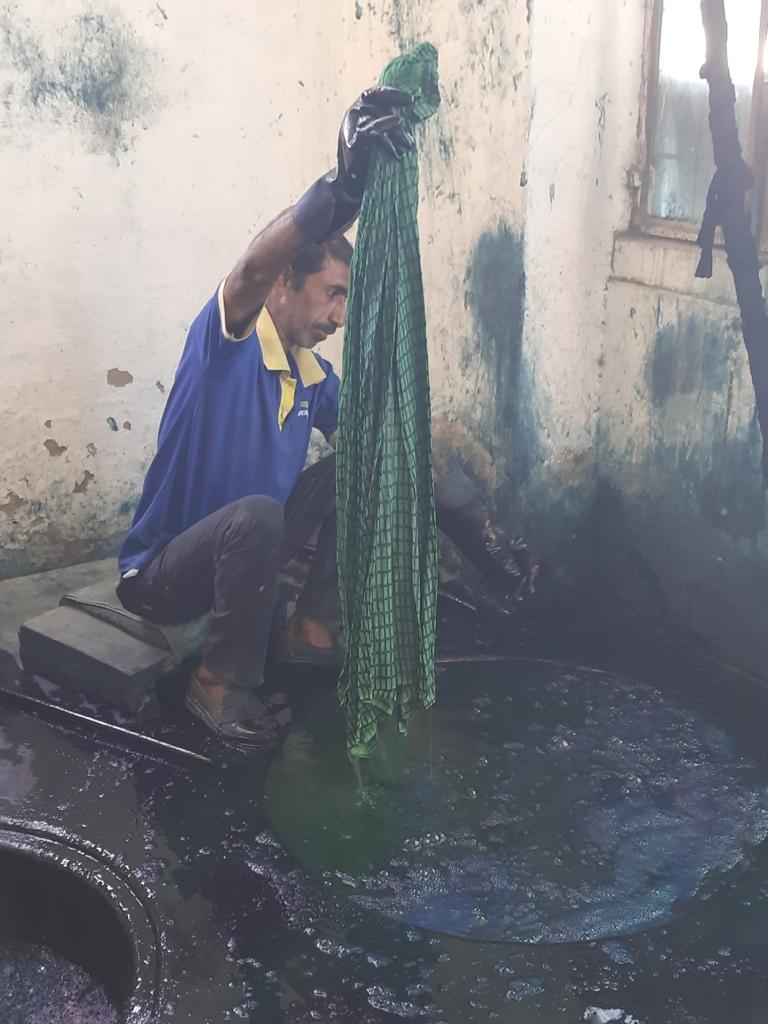
The Art and Tradition of Indigo Dyeing: A Journey into Timeless Blue Hues"
Share
Indigo dyeing is an intensive process that has been used for centuries to colour textiles with the distinctive blue hue of indigo. Indigo available in powder form is 80% indigo and 20% ash. The ash from burning the Babool tree is acetic, which acts as catalyst in fermentation. The powdered form of indigo is dissolved in water, boiled and left to cool down for 2-3 days. During fermentation, indican is converted into a soluble form called indoxyl.
Oxidation
- The indoxyl solution is exposed to oxygen in the air. This process is crucial for the indoxyl to be oxidized into its insoluble form, which is true indigo pigment.
- The colour changes from green to blue as the oxidation occurs.
Precipitation
The insoluble indigo pigment does not dissolve in water, so it needs to be precipitated before it can be used as a dye.
The liquid is often mixed with a reducing agent, such as a base like sodium hydroxide or a reducing sugar, which converts the soluble indigo into its insoluble form.
The indigo pigment settles to the bottom of the container.
Indigo Paste or Cake Formation
The settled indigo pigment is collected, dried, and formed into cakes or a paste.
These cakes or paste can be stored for later use.
Dyeing Process
Before dyeing, the indigo pigment needs to be reduced to its soluble form, leuco-indigo, which can penetrate the fabric.
When the fabric is taken out of the vat, the leuco-indigo reacts with oxygen in the air, turning back into insoluble indigo and binding to the fabric fibres.
Repeated Dipping
Achieving a deep and saturated indigo colour often requires multiple dips into the indigo vat. After each dip, the fabric is allowed to oxidize and the process is repeated until the desired colour is achieved.
Rinsing and Finishing
After reaching the desired colour, the dyed fabric is thoroughly rinsed to remove excess indigo and any impurities.
The fabric may undergo additional processes, such as washing and finishing, to enhance its properties and appearance.
The indigo dyeing process is known for its unique characteristics, including the way the colour develops during oxidation. It has been widely used in traditional textile arts, such as denim production, and continues to be a popular dyeing method today.
1 comment
Very interesting and lovely. Would love a post about the historic culture behind these dying methods